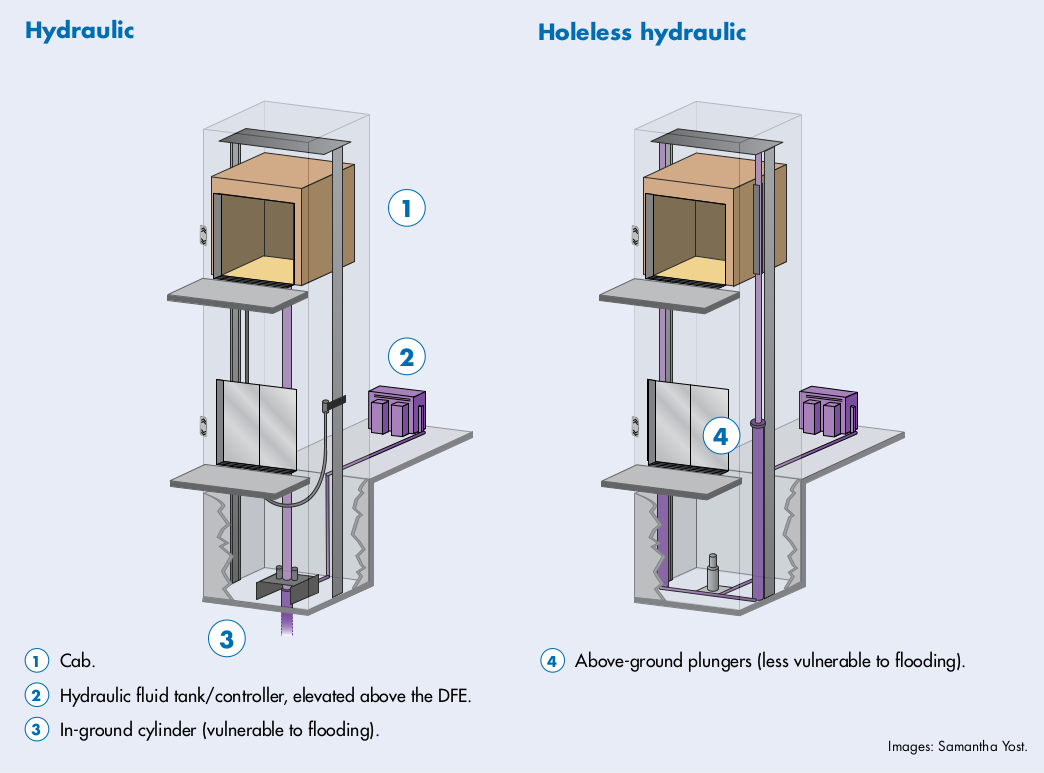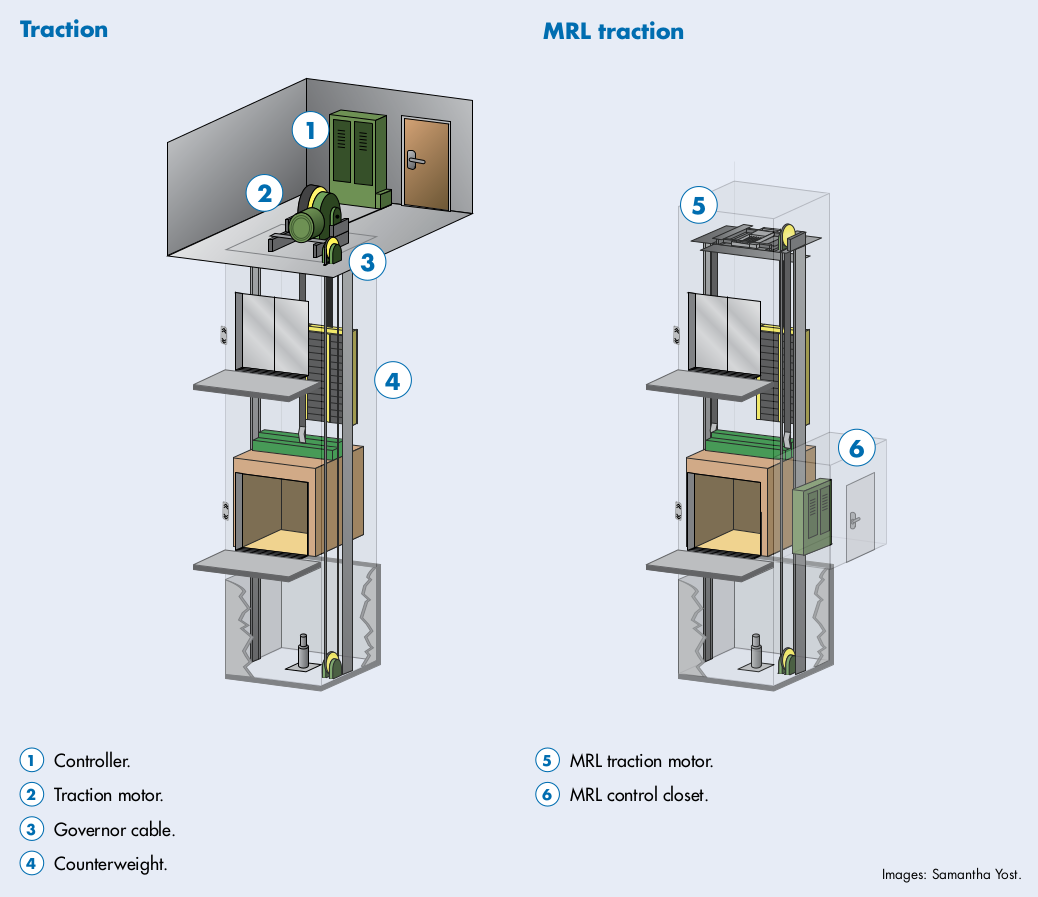Floodproofing
Description + function
Different types of elevators have different vulnerability to flooding.
- Hydraulic elevators are pushed up by pistons. They are found in some low-rise buildings (usually with five floors or fewer). Holeless hydraulic elevators are preferred in flood zones because the piston is positioned well above the bottom of the elevator shaft, which reduces the risk of hydraulic fluid contaminating the floodwater. The elevator pit usually extends 4 to 5 ft. below the lowest access level of a hydraulic elevator.

-
Traction elevators hoist the elevator up with a traction motor and are more common in multifamily buildings. In many older traction elevators, a machine room on the roof houses the elevator controls and mechanical elements. Newer machine room-less (MRL) traction elevators require a control closet, which can be located at any level near the elevator shaft. The elevator pit usually extends 6 to 8 ft. below the lowest access level of a traction elevator.

Strategy into action
- Sizing of elevator motors are an important consideration when determining backup power requirements.
- Elevator shafts that extend below the DFE should be designed and built to resist the hydrostatic pressure of floodwater. Appropriate shaft construction materials include reinforced masonry block and reinforced poured concrete.
- During power outages in buildings of four stories or more, advanced elevator controls should automatically shut down all but one elevator at a flood-safe floor, while allowing the functioning elevator to operate on backup power. (See Strategy: Maintaining Power to Critical Systems).
- Keep electronic elevator controls above the DFE in the rooftop machine room (for conventional traction elevators) or in a mechanical closet adjacent to the elevator shaft on an upper floor (for MRL traction elevators).
- Set elevator controls to prevent cabs from being lowered to a flood-prone lower floor during a power outage or flood. Install one or more float switches in the elevator pit with controls to prevent the elevator cab from descending into a flooded pit. Designate fire recall floors above the DFE.
- Install flood alarms in pits. Install controls to keep the elevator cab out of a flooded shaft.
-
Relocate hydraulic controllers or traction motors out of the elevator pit.
-
Dry component floodproof any electronic equipment that cannot be relocated out of the elevator pit.
-
Install sump pumps at the bottom of the elevator pits. Hydraulic elevator sump pump systems should include separators to remove hydraulic fluid from the discharge. (See Strategy: Sump Pumps).
Operations + maintenance
Prior to a flood, bring elevator cabs to an upper floor above the DFE, park them and shut off power. If one elevator is kept operational on emergency backup power, it should be prevented from descending to a flooded floor.
After flooding, use caution around elevator equipment that may have been damaged. Engage an elevator service company to conduct a detailed inspection to determine any damage. With traction elevators, little can be done to protect governor cables, which extend to the bottom of the elevator pit. These usually have to be replaced following a major flood.
If an elevator has been damaged, ensure that a technician services it before it is returned to use.
Estimated cost
- $
- $$
- $$$
- $$$$
Supporting strategies
Resources
- Elevator Hurricane Preparedness, Miami Dade County Government. www.miamidade.gov/facilities/elevator-hurricane-preparedness.asp
- Elevator Installation for Buildings Located in Special Flood Hazard Areas in Accordance With the National Flood Insurance Program, Technical Bulletin 4, FEMA, November 2010. www.fema.gov/media-library/assets/documents/3478
- Guidance on Record-Keeping, Rising Waters: Impact on Elevators. www.kja.com/rising-waters-impact-on-elevator-and-escalators-p154285
